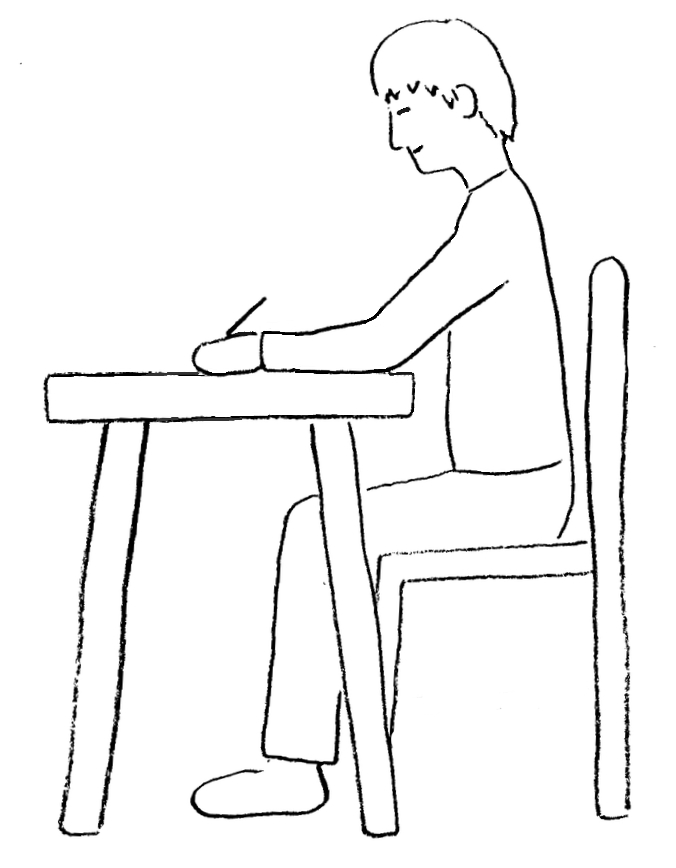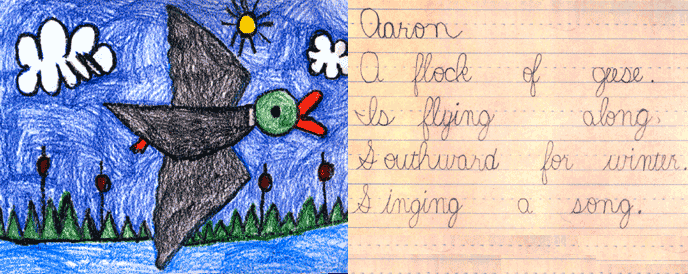Tyler, age 6, “Curious wants to be held by Mom.”
We began working on Draw Write Now in 1992 when my children were four and six years-old. They were immersed in their grandmother’s drawing lessons, and I have to admit that I wondered if all the exposure to the lessons would limit their budding creativity. I got my answer with their drawings.
Sick with the flu, Tyler and I were the only ones home. Feeling terrible and not able to watch over him as usual, I heard him go outside and told myself he would return shortly. Just as I was getting concerned, he came inside and quietly amused himself in the front room then came to my bedroom with this drawing and note. He had gone out to the pen to get a look at his pet rooster, Curious, so he could draw the picture.
Michelle loved Curious, too, and made her drawing by looking at the photo of Ty and Curious.
My children made many Draw Write Now drawings of dogs, cows, boys, girls, horses, crocodiles and yes, chickens, giving them the skills to look at a subject and draw what they saw. I’d say that training a child to use basic drawing skills is an important skill for a creative child to possess!
Ty and Curious
Michelle, age 8, “Curious”















My children are the youngest of her grandchildren. We lived a long distance from Marie, so in 1991 she mailed drawings and notes to my five year-old daughter so she could do the lessons like the older grandkids.